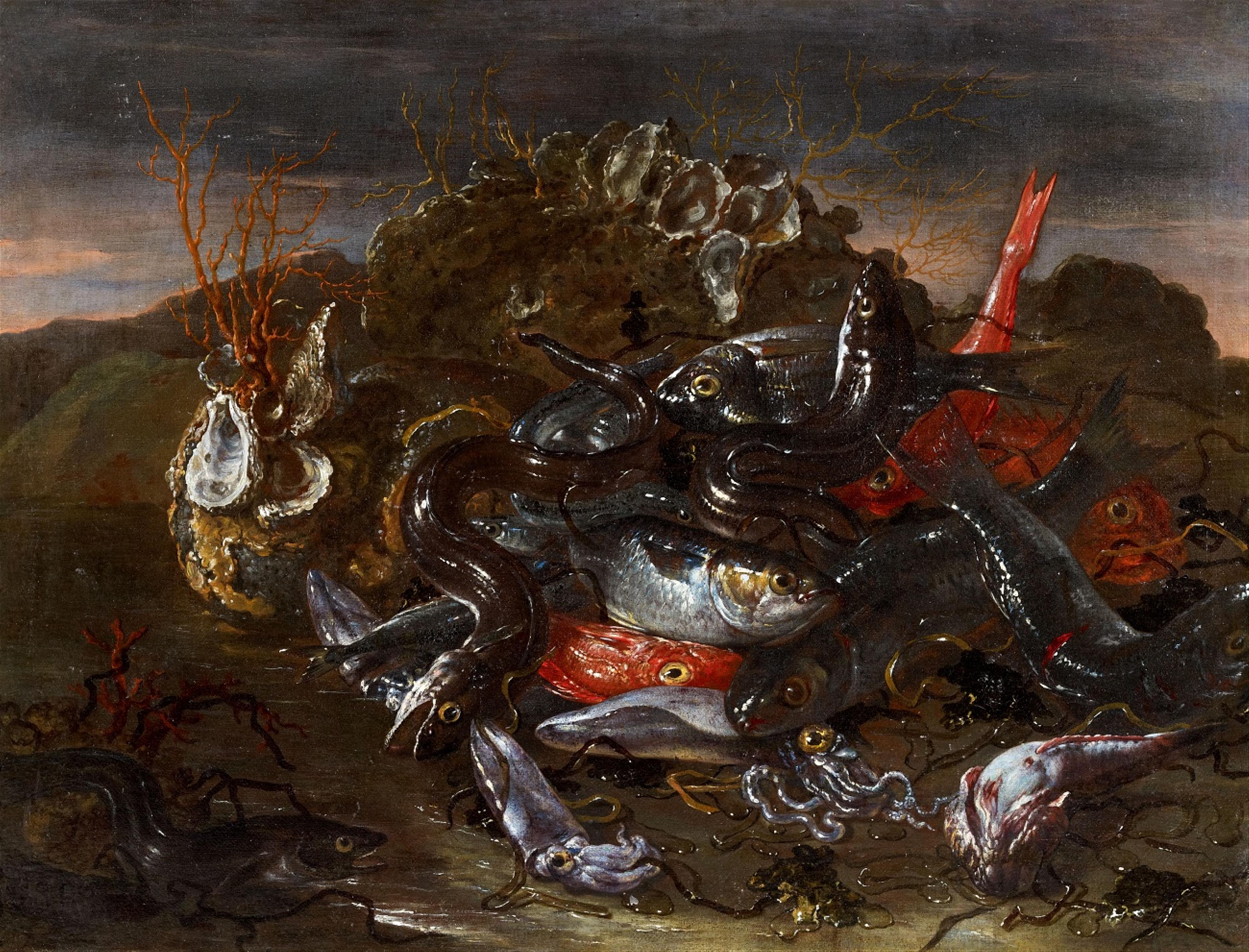Giuseppe Recco
Still Life with Sea Creatures
Oil on canvas. 78.5 x 104 cm.
Signed lower left: EQ S R.co.
The work, on Neapolitan 17th Century canvas, is signed to the lower left with the monogram, "EQ•S R.co" : Giuseppe Recco was certainly one of the most prominent still life painters in Naples, and throughout Italy, in the 17th century (for biographical notes: R. Middione, in La natura morta in Italia, a.c. F. Zeri e F. Porzio, Milano, Electa, 1989, II, pp. 903-911 and La natura morta italiana da Caravaggio al Settecento, exhibition catalogue, Milano, Electa, 2003, pp. 208-219; 492). Giuseppe Recco was a member of a family of still life painters and was appreciated by many of the most important collectors of the time, such as the Grand Duke of Toscana, Ferdinando de' Medici (1663-1713), and the Spanish King, who called him to his court upon the suggestion of Luca Giordano. However, Recco sadly died in Alicante shortly after his arrival in Spain.
During his career, the artist painted vanitas, floral, kitchen pieces and Pronk still lifes, but primarily maritime pieces, which are a constant in his production. In his early, caravaggesque, phase, the fish are represented in dimly lit interiors, often accompanied by copper or brass vessels. The strong chiaroscuro effects allowed the painter to express his mastery of the realistic rendering of fish-scales and metal reflections. The marine still lifes evolve with the development of Recco's carreer and become more and more spectacular in their setting: The present painting is typically baroque in its “casual” display of the fauna in a landscape which surrounds the still life itself. This compositional type can be considered one of this painter's most original contributions to the development of the still life genre in Neapolitan and Italian art.
The quality of the present work can easily be compared to one of Recco's other masterpieces, a product of a cooperation with Luca Giordano, which is now kept in the National Gallery of Australia, Adelaide: "Nettuno indica alle Nereidi le ricchezze del mare" (see: R. Lattuada, Luca Giordano e i maestri napoletani di natura morta nelle tele per la Festa del Corpus Domini del 1684, in Capolavori in festa. Effimero barocco a Largo di Palazzo (1683-1759), catalogo della mostra, Napoli, Electa Napoli, 1997, pp. 150-161). The two paintings are closely related: The artist presents in a smaller, private format the same theme of a triumphal display before a Mediterranean shore at twilight, a compositional device which he would often adopt.
Professor Lattuada ascribes the work to the mature production of Giuseppe Recco, not chronologically far from the Adelaide canvas and the commission of the Marchese del Carpio for the Festa del Corpus Domini (1684): In its masterly execution and the strong poetic effect resulting from the dialogue between landscape and still life, the present work constitutes an innovative step in the Neapolitan still life tradition and is described by professor Lattuada as one of the most original works in this genre in Italy.

